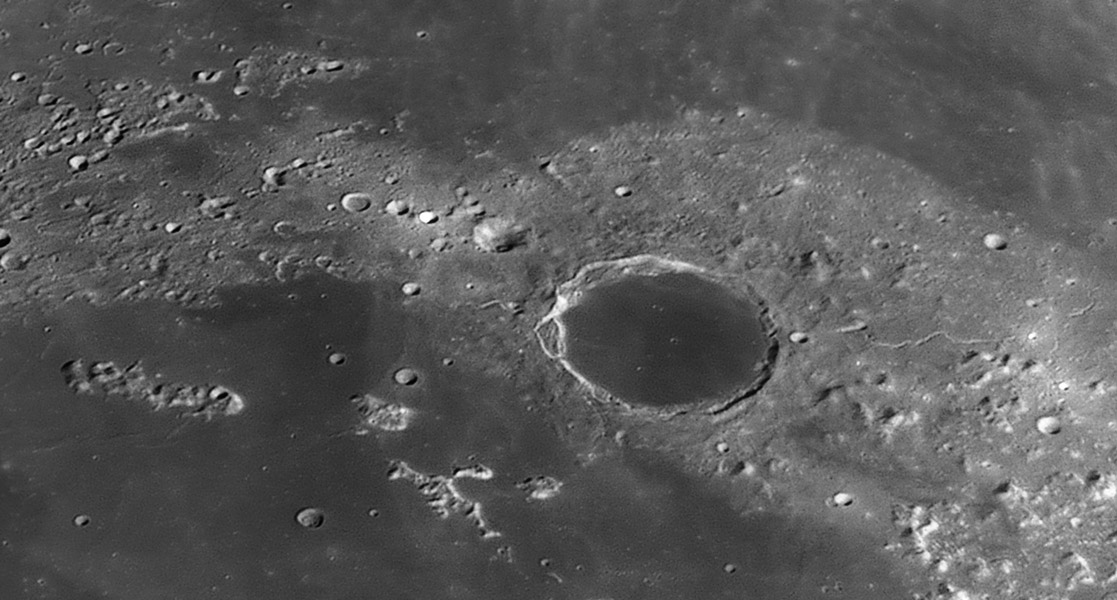Difference between revisions of "February 13, 2012"
| Line 16: | Line 16: | ||
Rükl plate [http://the-moon.wikispaces.com/R%C3%BCkl+3 3]<br /> | Rükl plate [http://the-moon.wikispaces.com/R%C3%BCkl+3 3]<br /> | ||
<br /> | <br /> | ||
| + | <p><b>Yesterday's LPOD:</b> [[February 12, 2012|Post Spa Craters]] </p> | ||
| + | <p><b>Tomorrow's LPOD:</b> [[February 14, 2012|More Hot Lips]] </p> | ||
<hr /> | <hr /> | ||
| − | |||
| − | |||
| − | |||
| − | |||
| − | |||
| − | |||
| − | |||
| − | |||
| − | |||
| − | |||
| − | |||
| − | |||
Revision as of 11:01, 7 February 2015
Blissfully Deep

image by Peter Rosén, Stockholm, Sweden
While processing more data from a recent frigid night of surprisingly good seeing, Peter noticed something odd near Plato - do you see it?
The 22 km wide crater Bliss just northwest of Plato looks a lot deeper than other nearby craters. I hunted through my files from the early 1970s and found that I had measured its shadow length on a Lunar Orbiter IV frame and calculated a depth of 2.8 km. For comparison, Jim Mosher found the average depth of Plato to be about 1.7 km with a maximum value of 2.25 km. Bliss is substantially deeper, which perhaps isn't surprising because Plato has obviously been partially filled with lavas that cover its central peaks and wall terraces. Other 22 km wide somewhat fresh craters have depths of 2.0 km (Müller), 2.25 km (Dale), 2.33 km (Haidinger), 2.5 (Torricelli) and 3.42 km (Focas) - all from the increasingly valuable Moon-Wiki. Based on these numbers Bliss may be a little deeper than normal, but is not a 3-sigma anomaly. Bliss' rim looks rougher than expected for a fresh crater - it looks more "explosive" than the smaller craters nearby. In fact, the LROC-Quick Map shows that is is not a fresh crater and does have an irregular rim outline. So Bliss' depth is somewhat odd but there appears to be nothing bizarre about it.
Chuck Wood
Technical Details
2012-02-04. Orion Optics CT 10" f/4.8 Newton telescope with a DMK-41AF02 camera a 2.5x Televue Powermate and a red filter. For capture and stacking: Astro IIDC and postprocessed in Photoshop.
Related Links
Rükl plate 3
Yesterday's LPOD: Post Spa Craters
Tomorrow's LPOD: More Hot Lips



